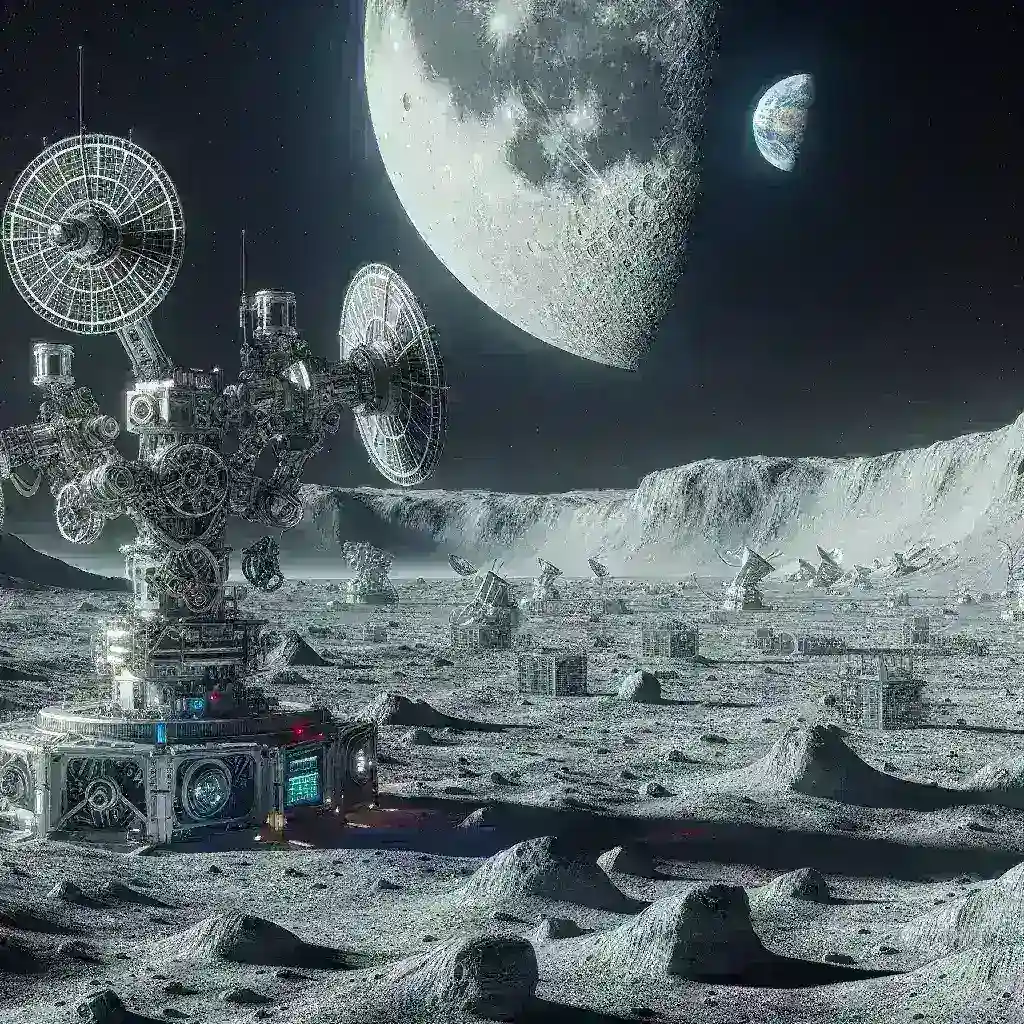AI Powered Robotic Arms Building Telescopes on the Lunar Surface
Introduction
The exploration of the moon has long fascinated humanity, and with advancements in technology, we are on the cusp of a new era in lunar exploration. One of the most compelling developments is the use of AI-powered robotic arms to build telescopes directly on the lunar surface. This article delves into the mechanics, significance, and future implications of these innovations in space science.
Historical Context of Lunar Exploration
Since the first lunar landing in 1969, our understanding of the moon has evolved dramatically. Initial missions focused on surface exploration and sample collection. However, as technology advanced, so did our ambitions. The idea of using the moon as a base for astronomical observations dates back to some of the earliest discussions among scientists and visionaries.
The Need for Lunar Telescopes
Telescopes on Earth face significant limitations due to atmospheric interference. The moon, with its lack of atmosphere, presents an ideal location for positioning telescopes. This enables clearer and more consistent observations of celestial bodies, enhancing our understanding of the universe.
AI-Powered Robotic Arms: A Game Changer
What Are AI-Powered Robotic Arms?
AI-powered robotic arms are automated machines equipped with artificial intelligence that allow for precision, adaptability, and efficiency in construction tasks. These arms can perform complex operations with minimal human intervention, making them ideal for the harsh and remote environment of the lunar surface.
Capabilities of Robotic Arms
- Precision Engineering: Robotic arms can assemble telescopes with accuracy that surpasses human capabilities.
- Autonomous Operation: Equipped with AI, these machines can make real-time decisions, adjusting their actions based on environmental conditions.
- Durability: Designed to withstand the extreme conditions of space, robotic arms are built to last.
The Construction Process
Step-by-Step Guide to Building Telescopes on the Moon
The process of constructing telescopes on the lunar surface involves several critical steps:
- Site Selection: Identifying optimal locations with minimal lunar dust and stable terrain.
- Transporting Materials: Sending necessary materials from Earth or utilizing lunar resources.
- Assembly: Robotic arms assemble the telescope components using precise movements and AI-driven adjustments.
- Calibration: Once assembled, the telescopes undergo calibration to ensure optimal functionality.
Advantages of Lunar Telescopes Built by AI Robotics
Enhanced Observation Capabilities
By positioning telescopes on the moon, scientists can achieve:
- Clearer Images: Observations are less affected by atmospheric disturbances.
- Longer Observation Periods: The moon’s rotation allows for extended viewing times of celestial events.
- New Discoveries: Potential for groundbreaking discoveries in astronomy and astrophysics.
Cost-Effectiveness and Efficiency
Utilizing AI-powered robots not only reduces labor costs but also speeds up the construction process. This leads to significant savings in time and resources.
Challenges and Considerations
The Risks of Automation
While the use of AI robotics presents numerous benefits, it’s essential to acknowledge potential challenges:
- Technical Failures: Any malfunction in the robotic systems could stall construction efforts.
- Environmental Factors: Lunar dust and extreme temperatures can impact robotic functionality.
- Dependence on Technology: Over-reliance on automated systems may pose risks if unanticipated issues arise.
Ethical Considerations
As we venture into the cosmos, ethical questions arise regarding the exploitation of lunar resources and the preservation of celestial environments. Balancing exploration with responsibility is crucial.
The Future of Lunar Astronomy
Potential Impact on Scientific Research
With the construction of telescopes on the lunar surface, the future of astronomy looks promising. Enhanced capabilities could lead to:
- Understanding Exoplanets: More detailed studies of planets outside our solar system.
- Researching Dark Matter and Energy: Exploration of fundamental aspects of the universe.
- Monitoring Cosmic Events: Observing phenomena like supernovae and black holes in unprecedented detail.
Collaboration in Space Science
The international scientific community could collaborate to share data and findings from lunar telescopes, fostering a more profound understanding of the universe.
Conclusion
The integration of AI-powered robotic arms in constructing telescopes on the lunar surface represents a transformative step in astronomy and space exploration. Not only does it promise to enhance our observational capabilities, but it also signifies a leap toward sustainable and efficient extraterrestrial construction. As we look to the stars, the moon may soon become our most powerful tool in unraveling the mysteries of the universe.
Call to Action
As we stand at the brink of this new frontier, it’s essential to stay informed and engaged with developments in space technology and lunar exploration. Join the conversation about the future of astronomy and the role of AI in expanding our horizons.

